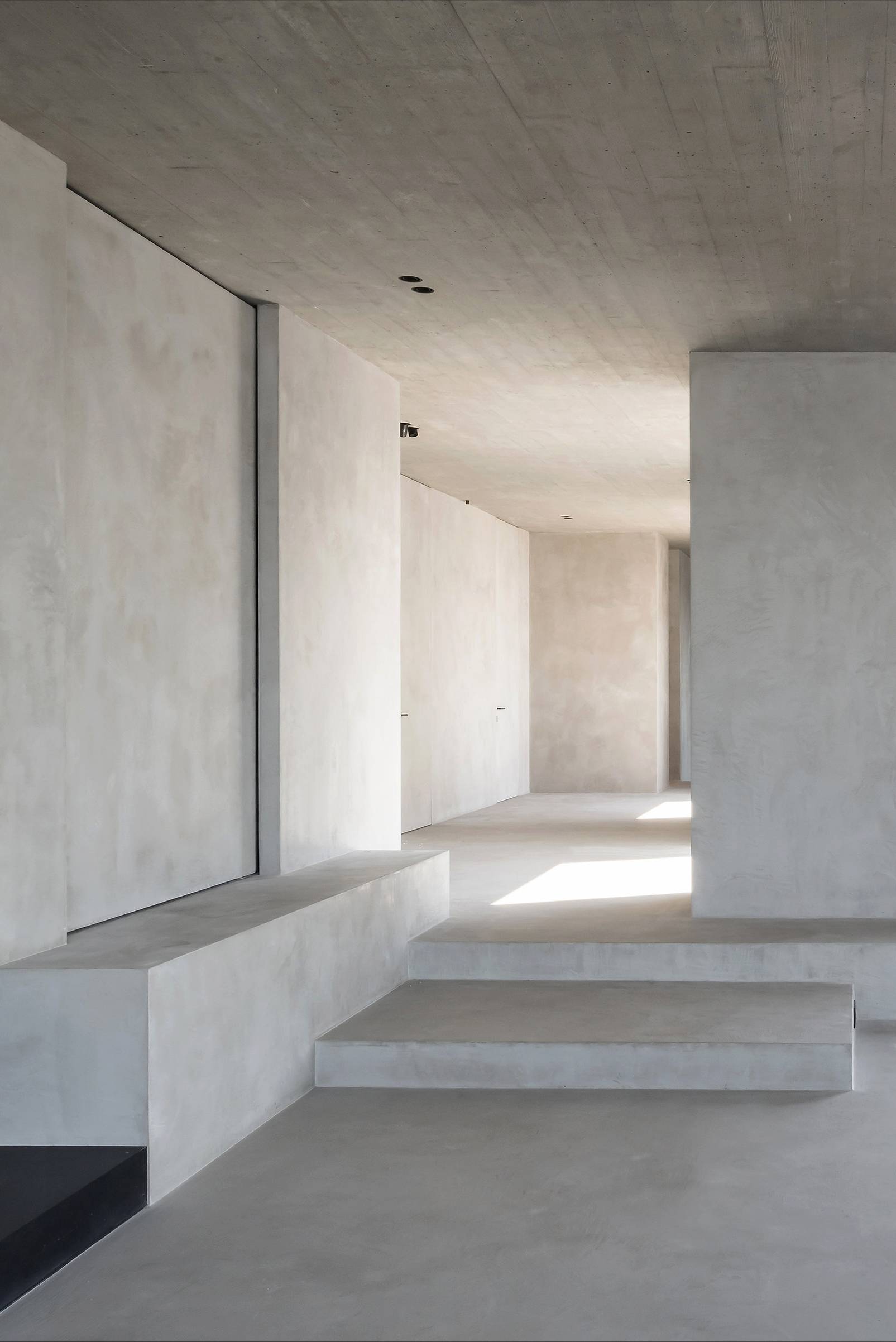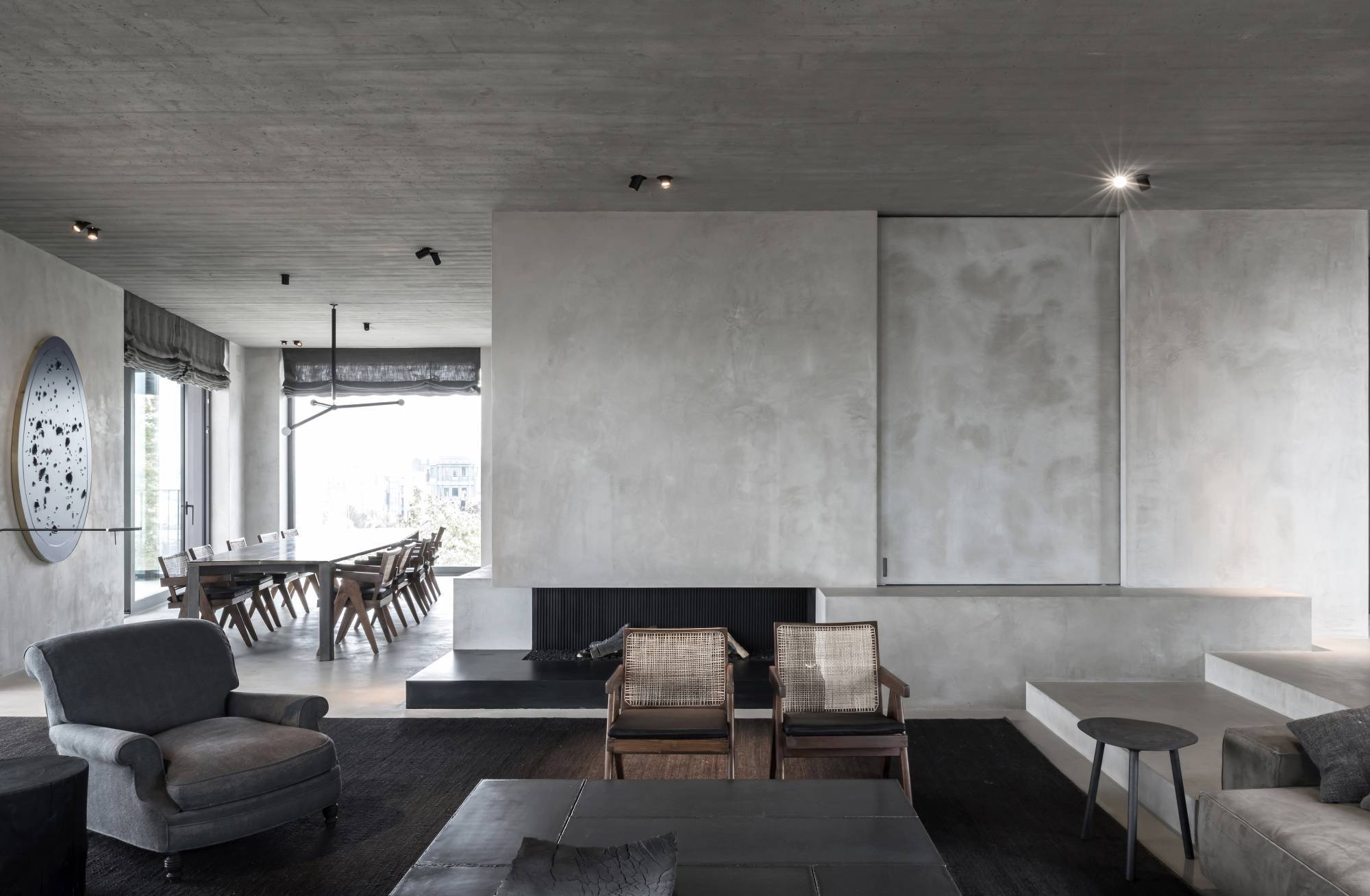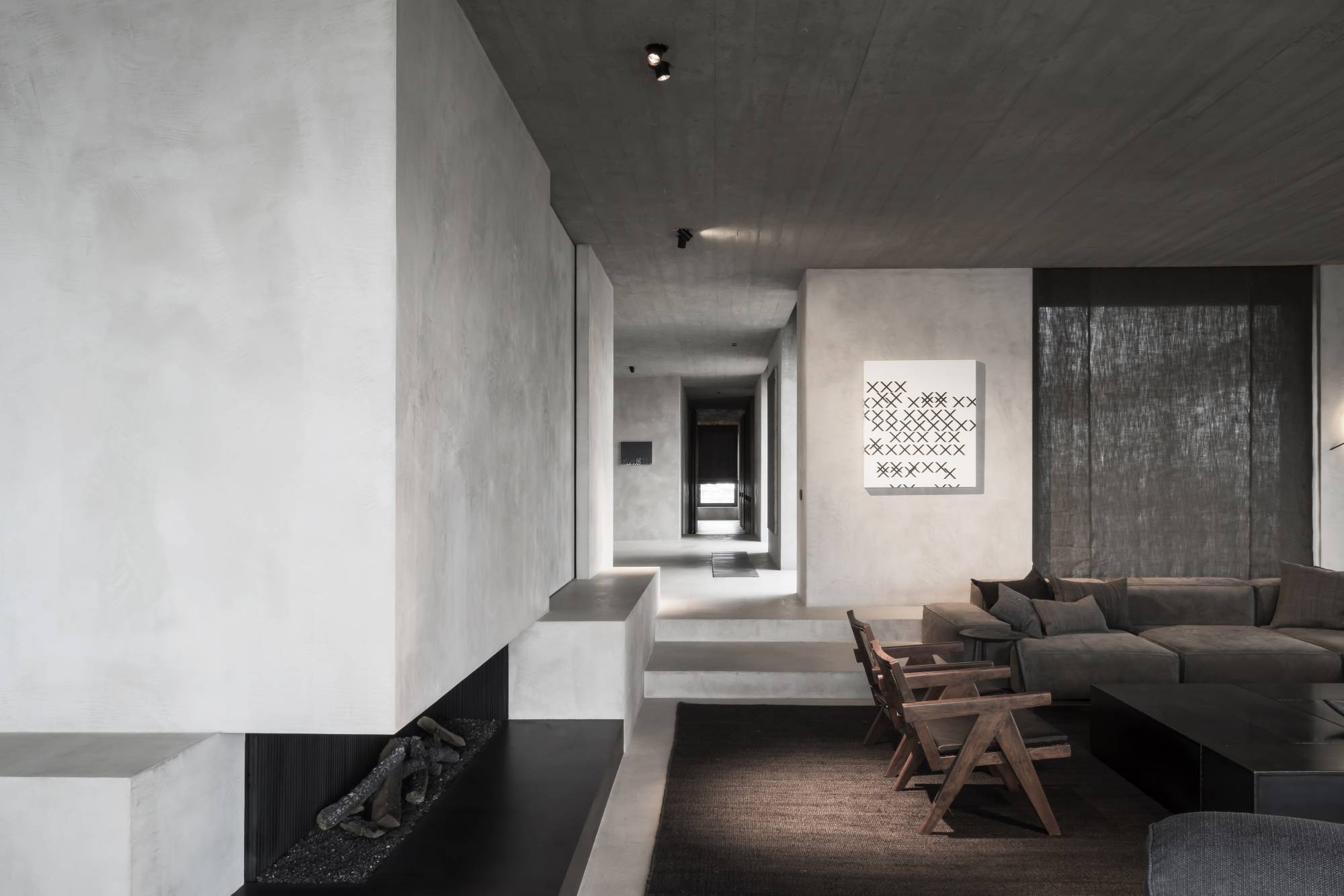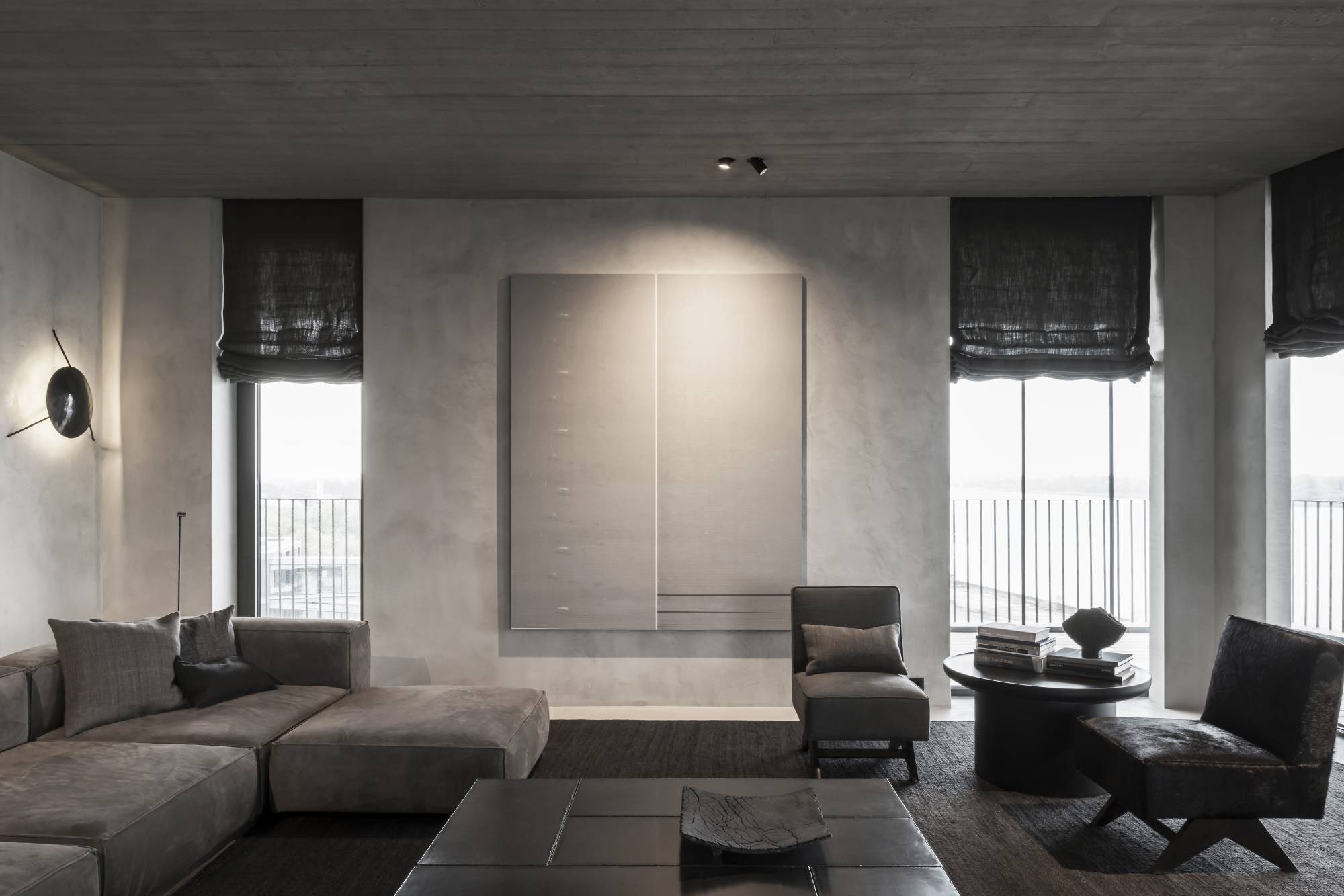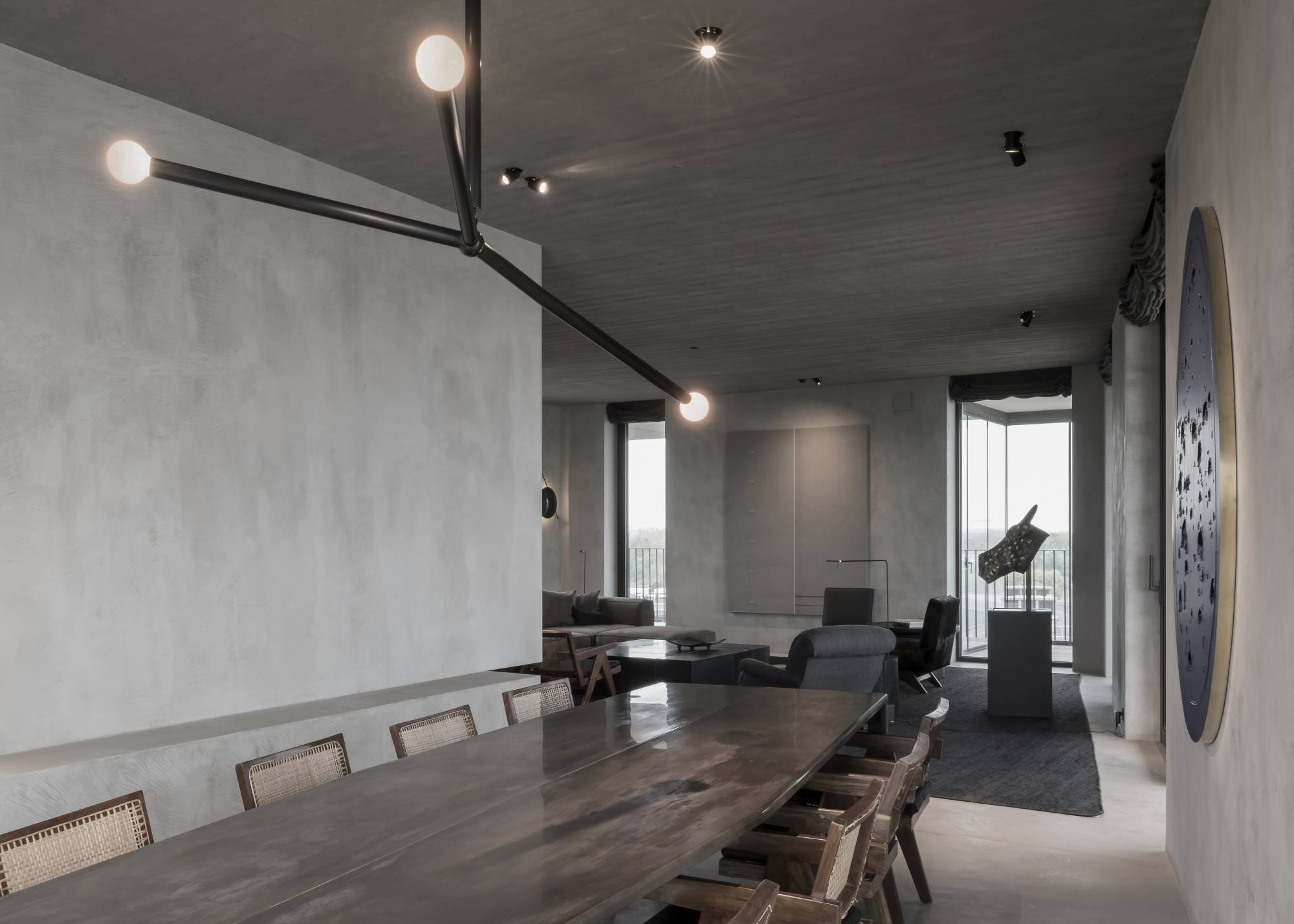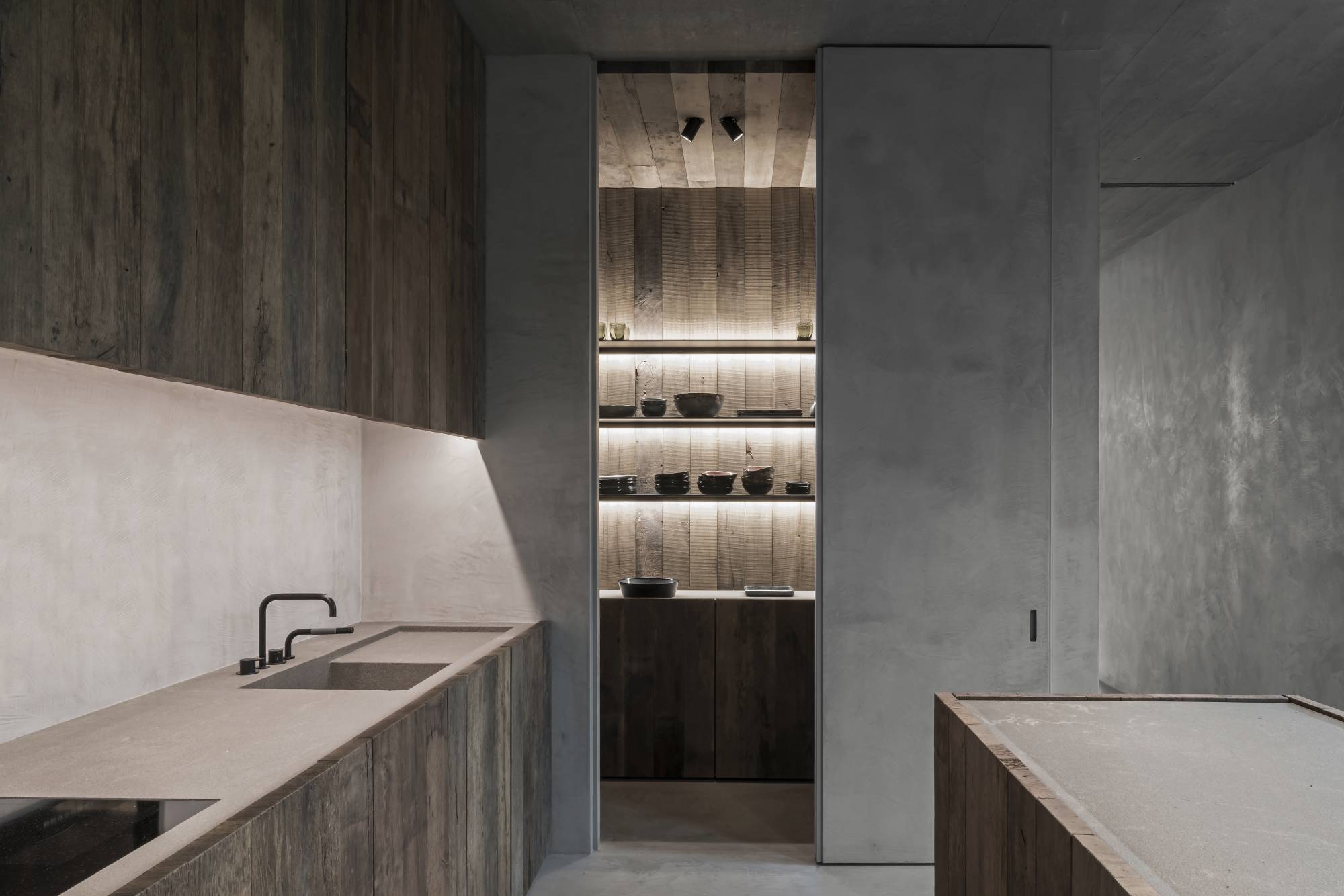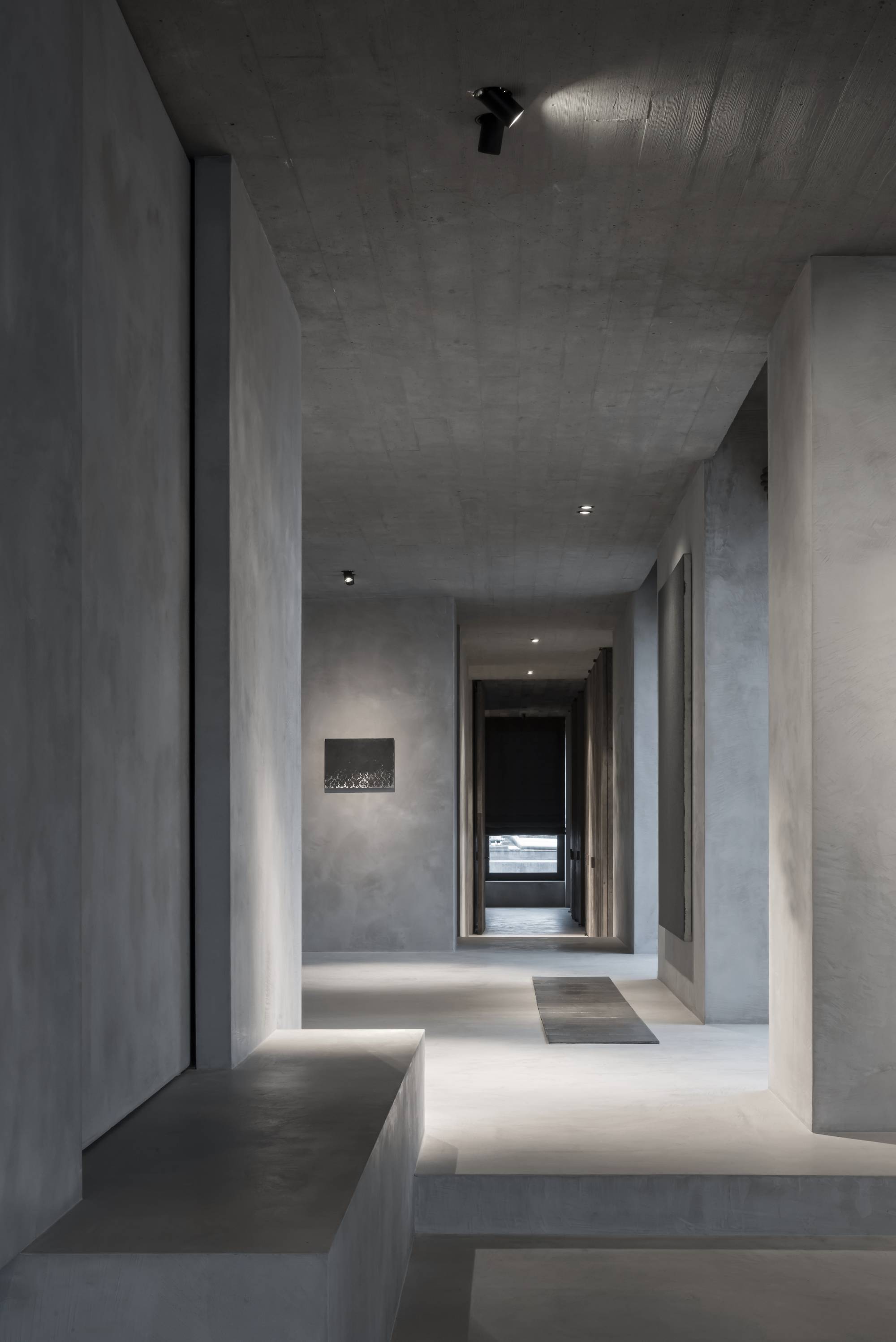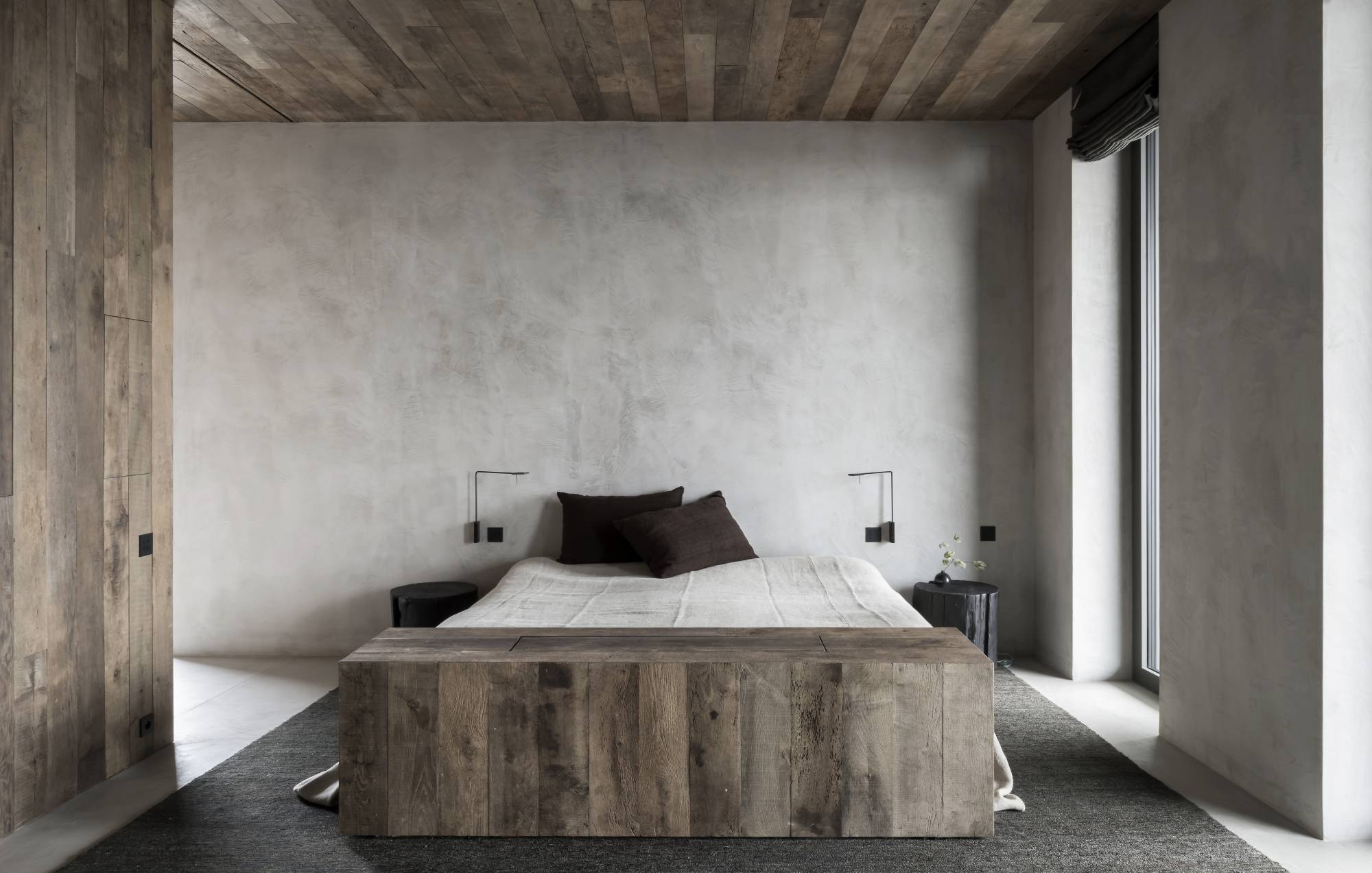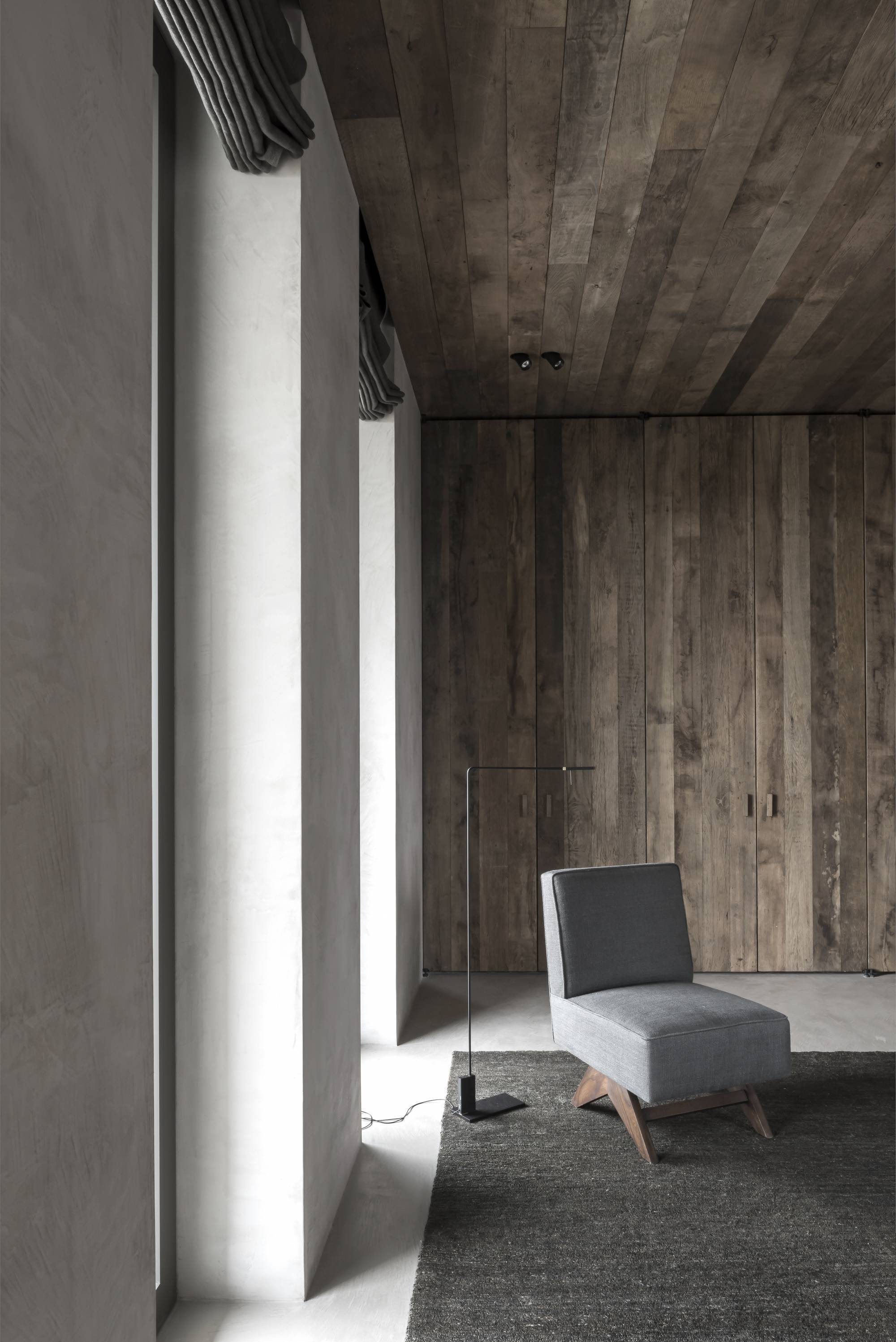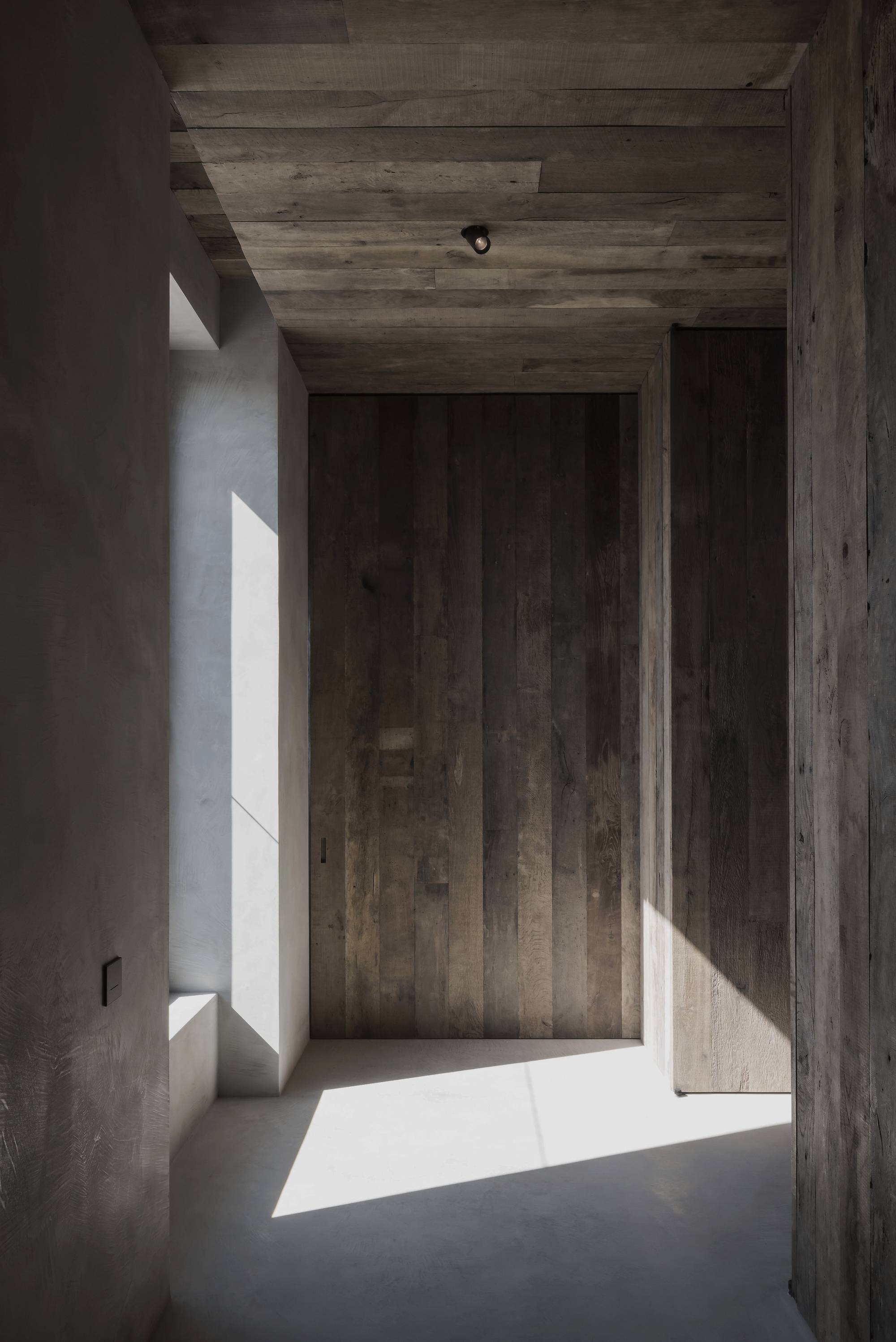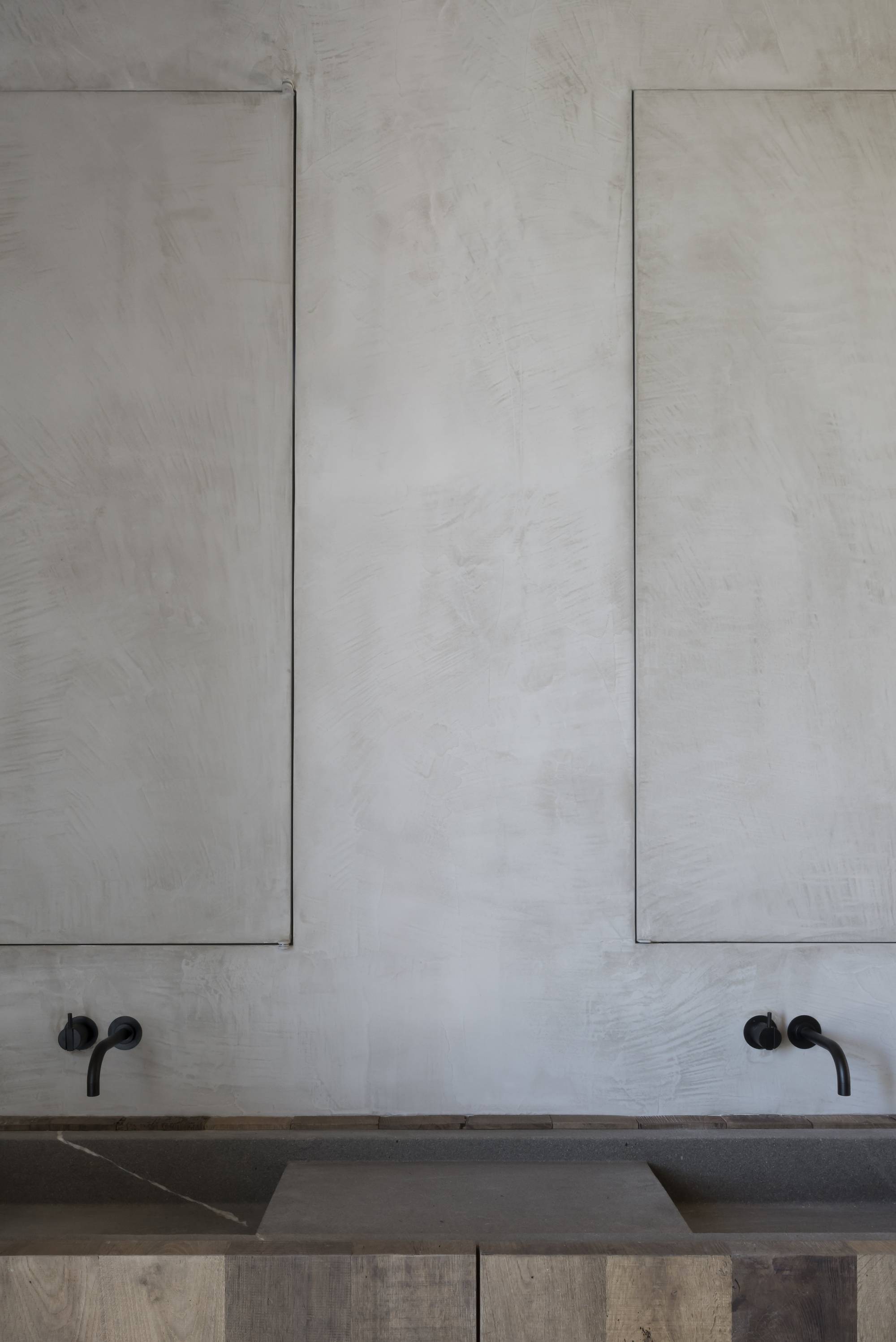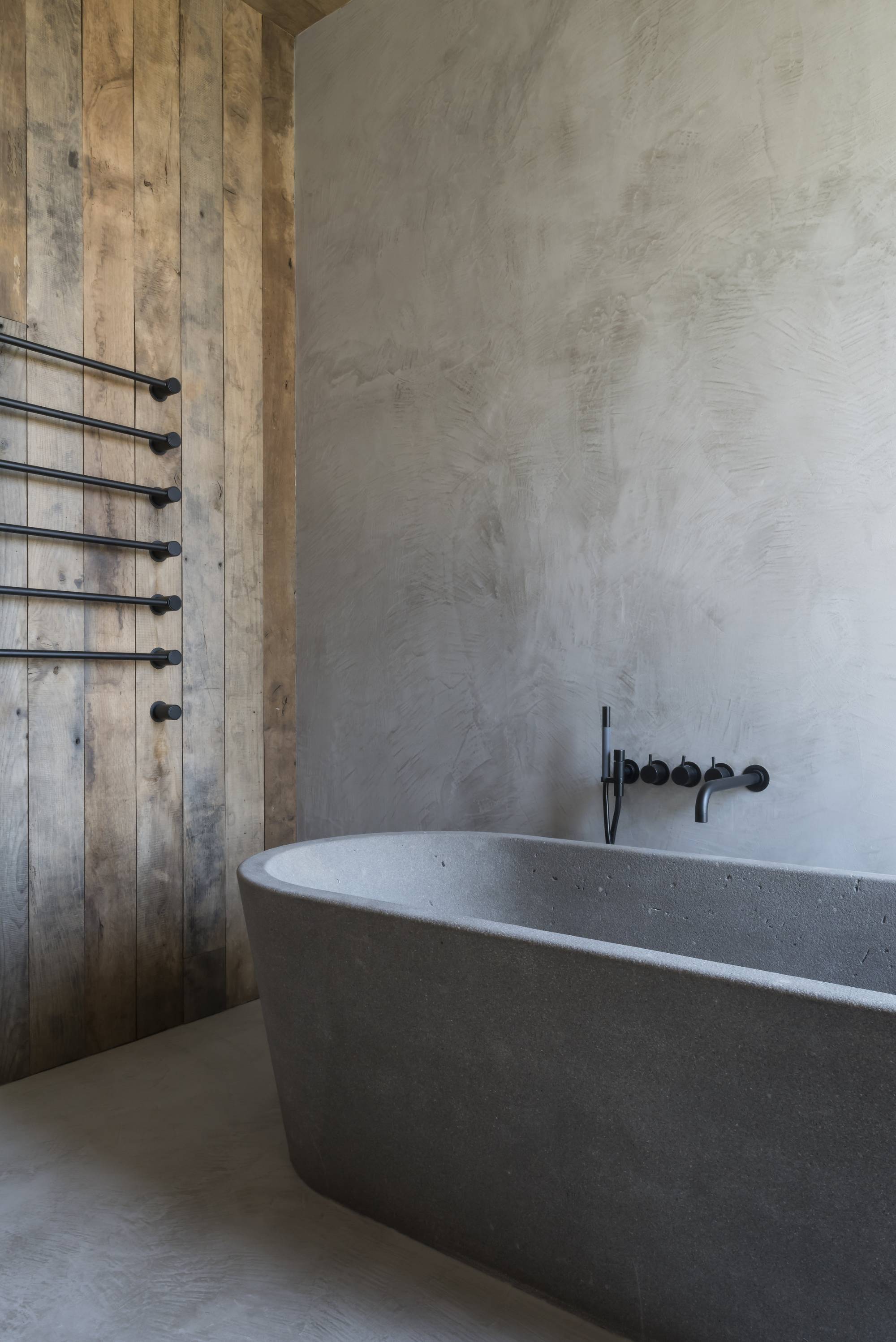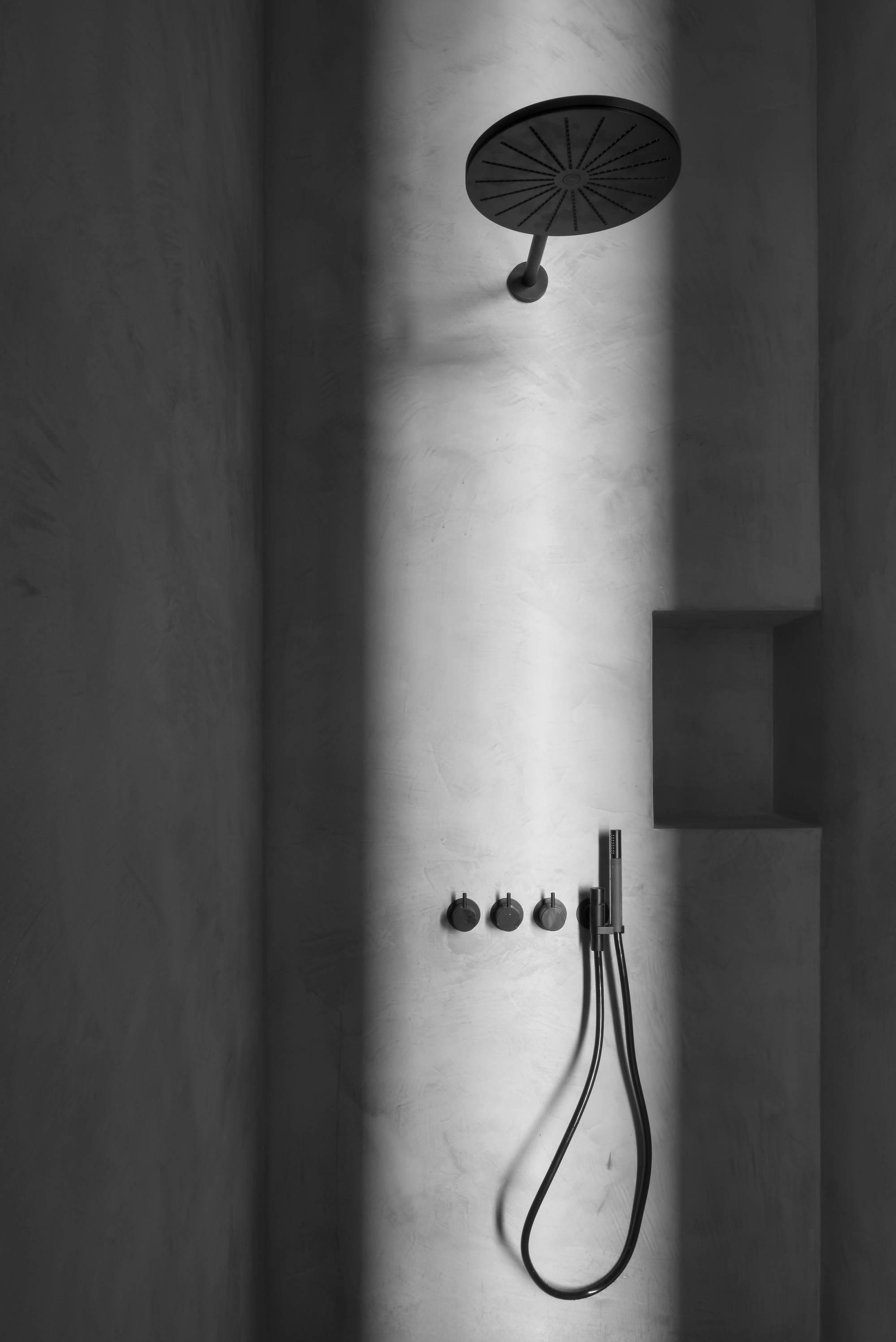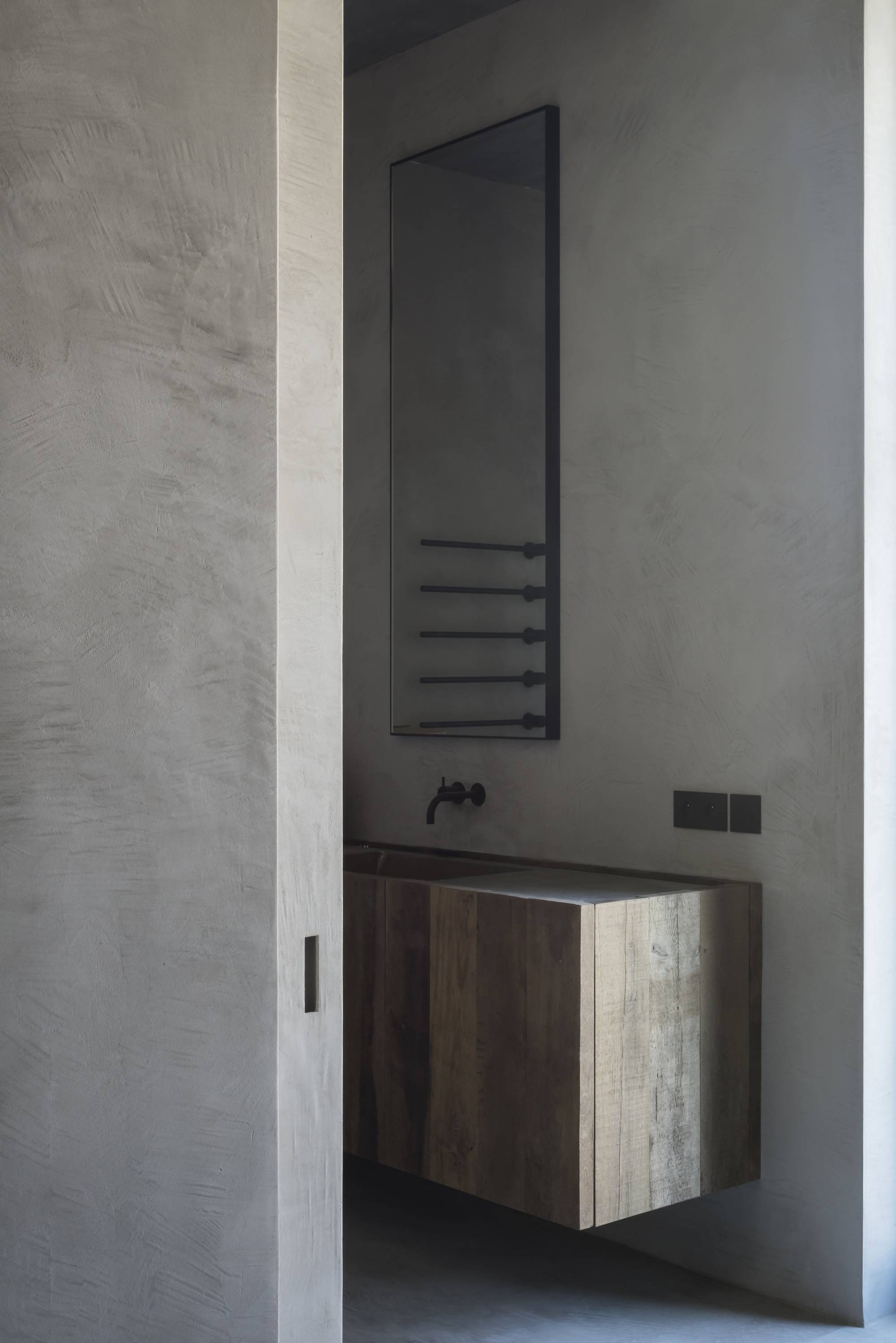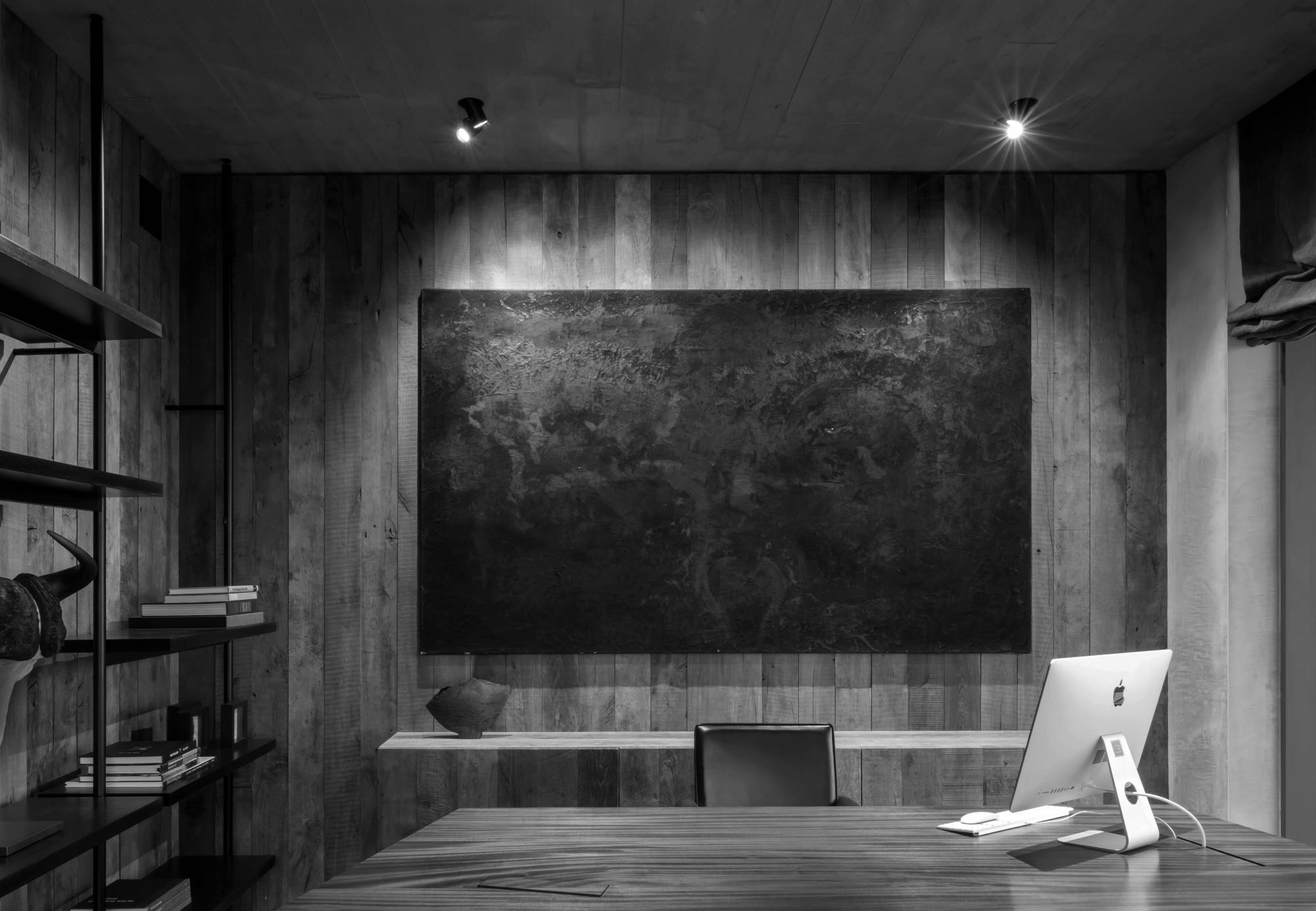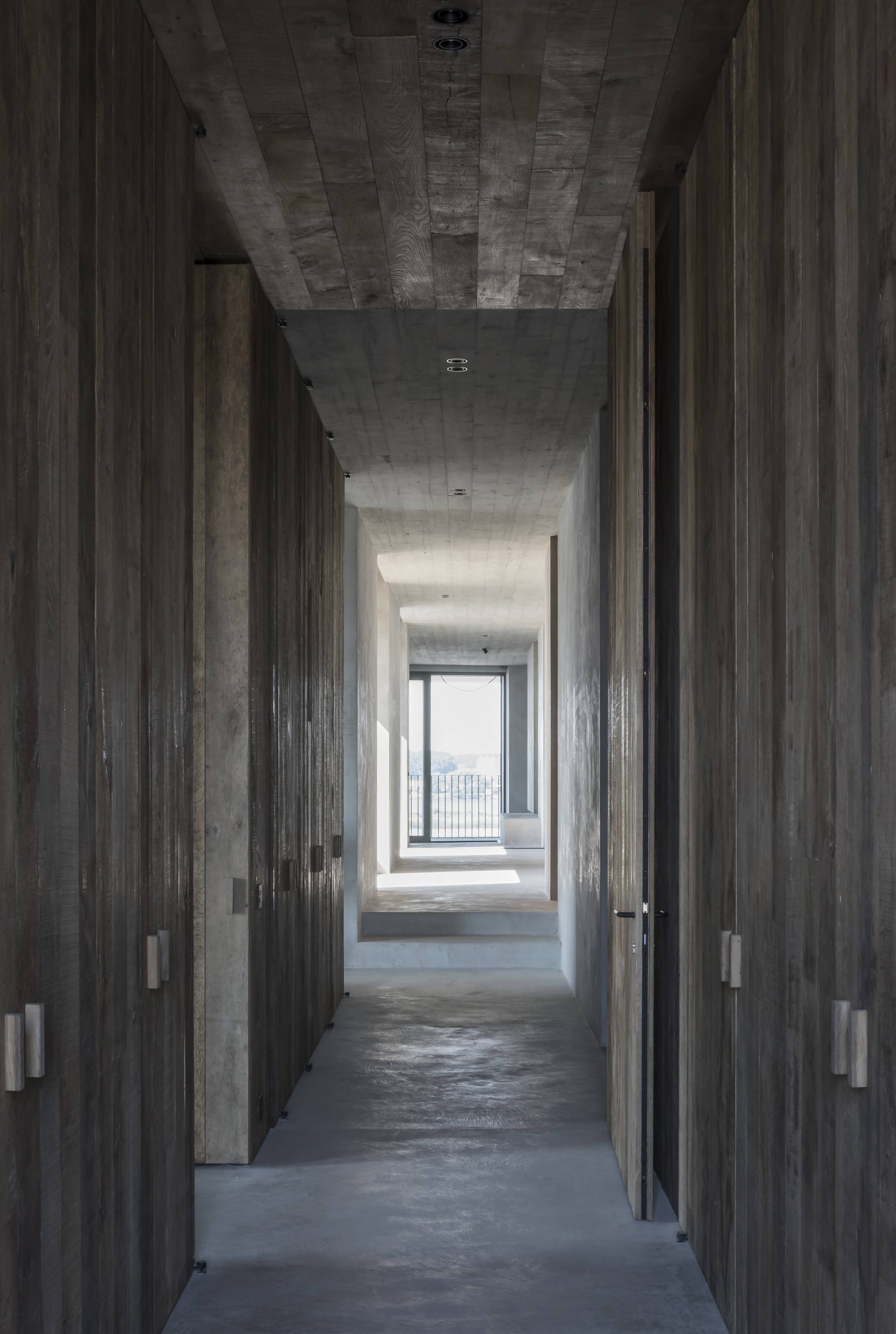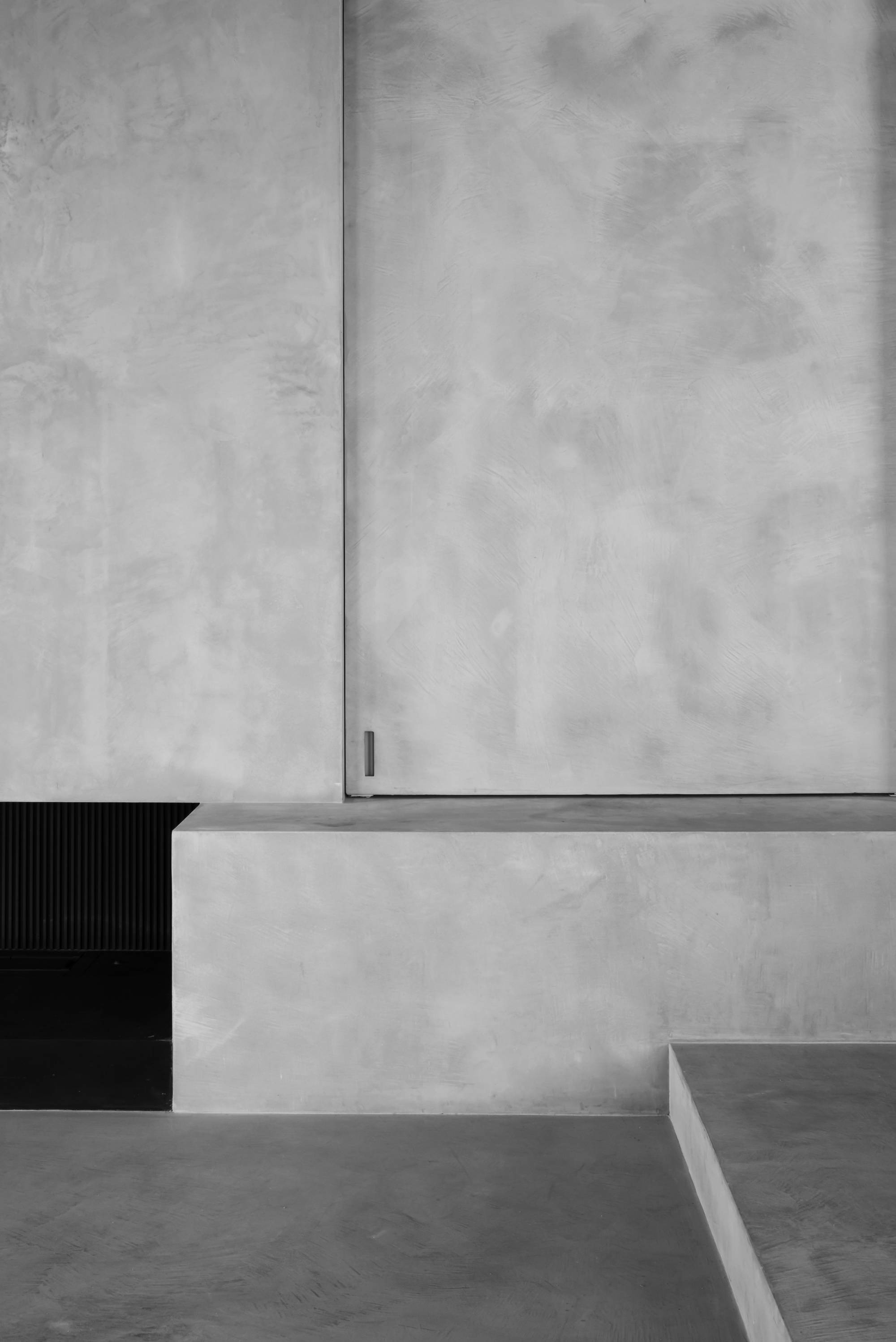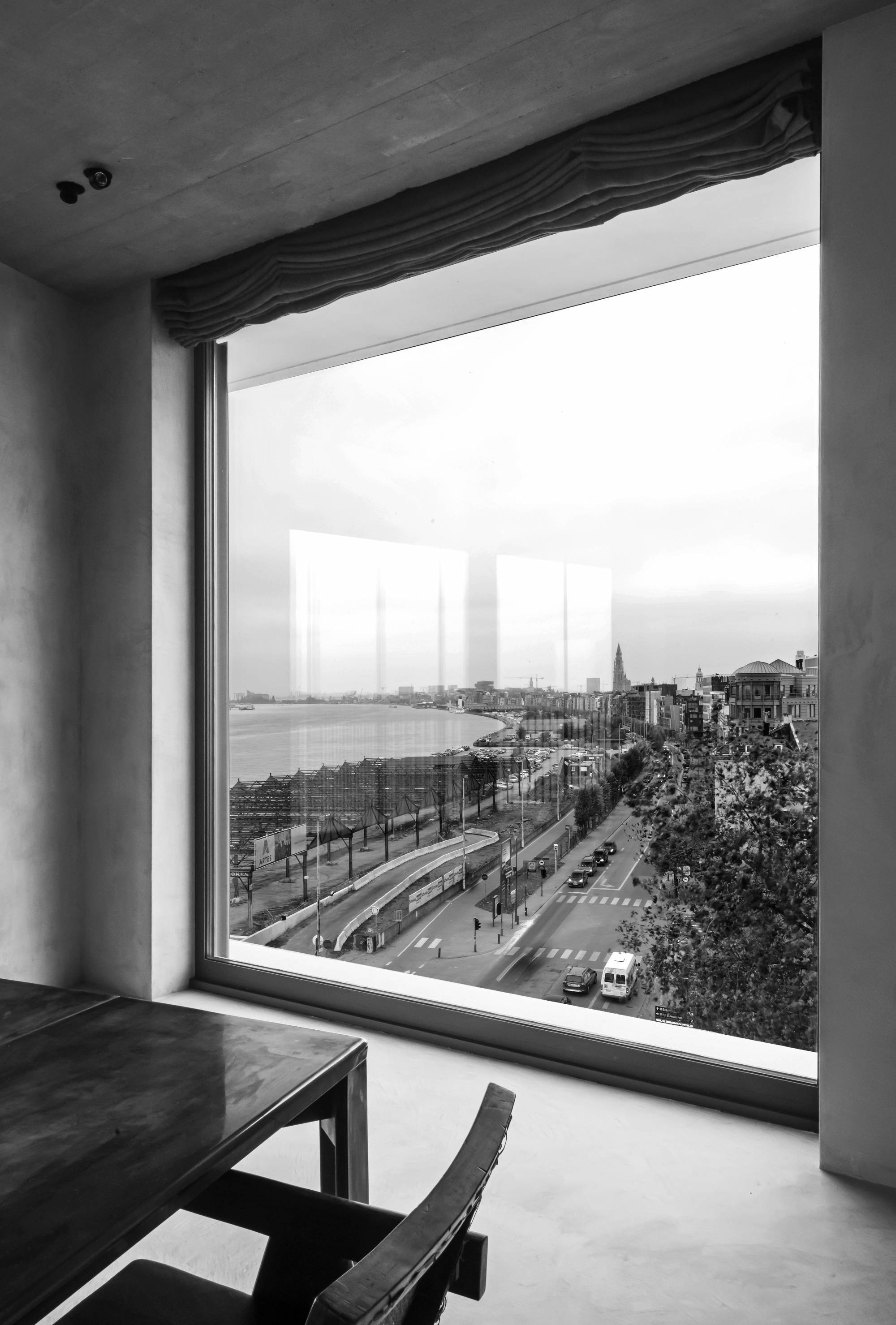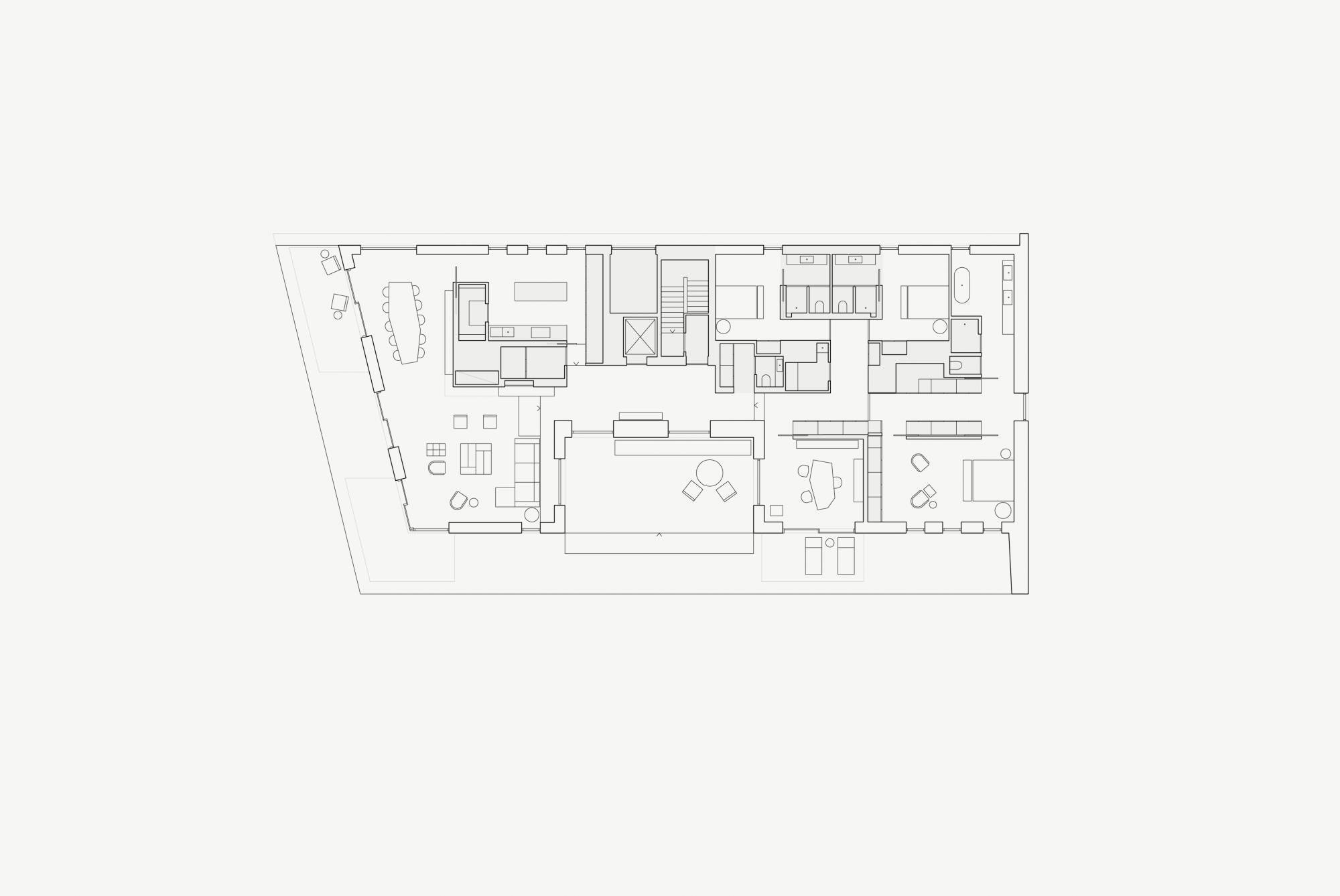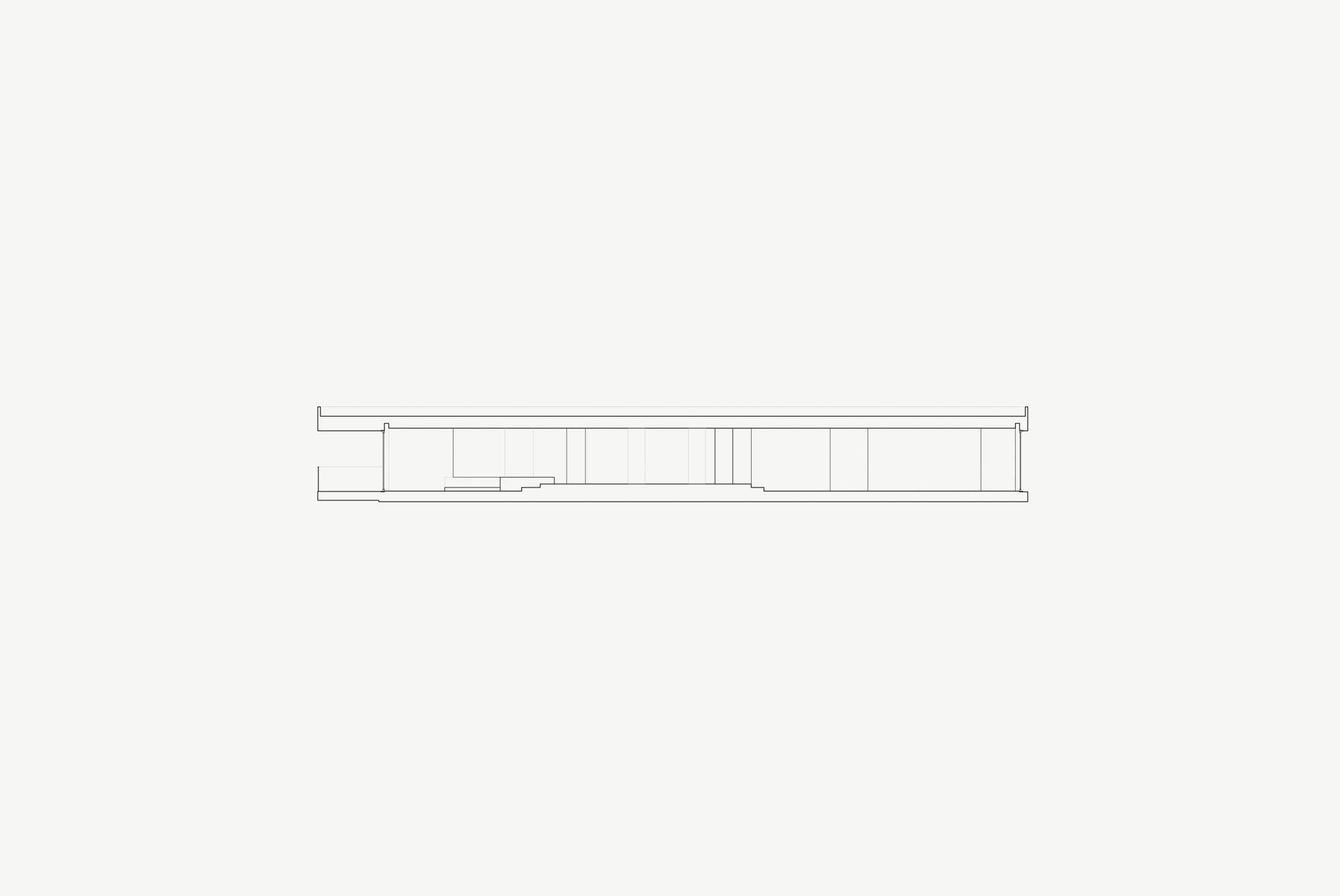C Penthouse
Antwerp, Belgium
2016
Inspired by the beautiful panoramic view of the River Scheldt and the bluestone along the gray quayside, the project is arranged around the axes of its volumes and breathtaking views, allowing each zone to take advantage of this spectacular location.
The concept of the project was to create an ‘urban loft’ that retains the rawness of construction, yet encompasses a complete finish and feeling of comfort. The concrete ceiling and rough timber refer to the historical warehouses, which have an architectural presence in the surrounding quay and the city. The concept was a large-scale interpretation of the abstract and sculptural approach of Belgian Cubist Georges Vantongerloo (1886–1965), a founding member of Dutch artistic group De Stijl, the movement that advocated pure abstraction and universality by reducing the essentials of form and colour.
The project has strong architectural qualities within a residential apartment context. The sculptural architectonic approach corresponds to the Abstract Expressionist art collection of the owner. Works by international artists – such as Gavin Turk, Carl Andre, Gerhard Richter, Jef Verheyen and Wade Guyton – are dotted around the penthouse.
The walls and floors are finished in the same material to a rigorous standard of detail for a sober and textural appearance. The material selection is a manifestation of the grey tones of the River Scheldt and its quayside, as well as referring to the Arte Povera movement, in which driftwood, metal, earth and concrete were used.
From the beginning of the design process the width of the timber planks and the character of the concrete ceiling were integral to the entire project. This meant that all dimensions – of the walls, cupboards, and so on – were designed as multiples of the width of the timber planks used for the creation of the concrete ceiling.
The central monolithic volume enclosing the fireplace is positioned in such a way that all surrounding spaces have a direct connection; however, they are also separable through use of full-height sliding doors, which makes the experience of the penthouse that of a single open space, divided by functional blocks (including for example kitchen storage, bathrooms, dressing room, toilets, fireplace and so on).
The floor level of the entrance is slightly raised to match the height of the facing terrace. This intensifies the spaciousness and contributes to the separation between the public zone to the front and the private area at the back. The private rooms provide a more intimate experience through the use of reclaimed timber planks to the ceiling and walls.
The Cubist approach also shows through the semi-fixed elements in the penthouse: the kitchen island, central coffee table in the living room, or the wooden blocks behind the beds with the slide-in television screen, for example. The elongated bronzed brass table is a specially altered piece by Vincenzo De Cotiis that creates a pronounced presence in the dining area, which enjoys the panoramic view of the Antwerp skyline with the cathedral behind.
—
Photography:
Integrated lighting:
Publications:
Elle Decoration Italia, April 2017
Architectural Digest India, March 2018
Elle Decoration China, June 2018
Homes&Life Magazine, September 2018
